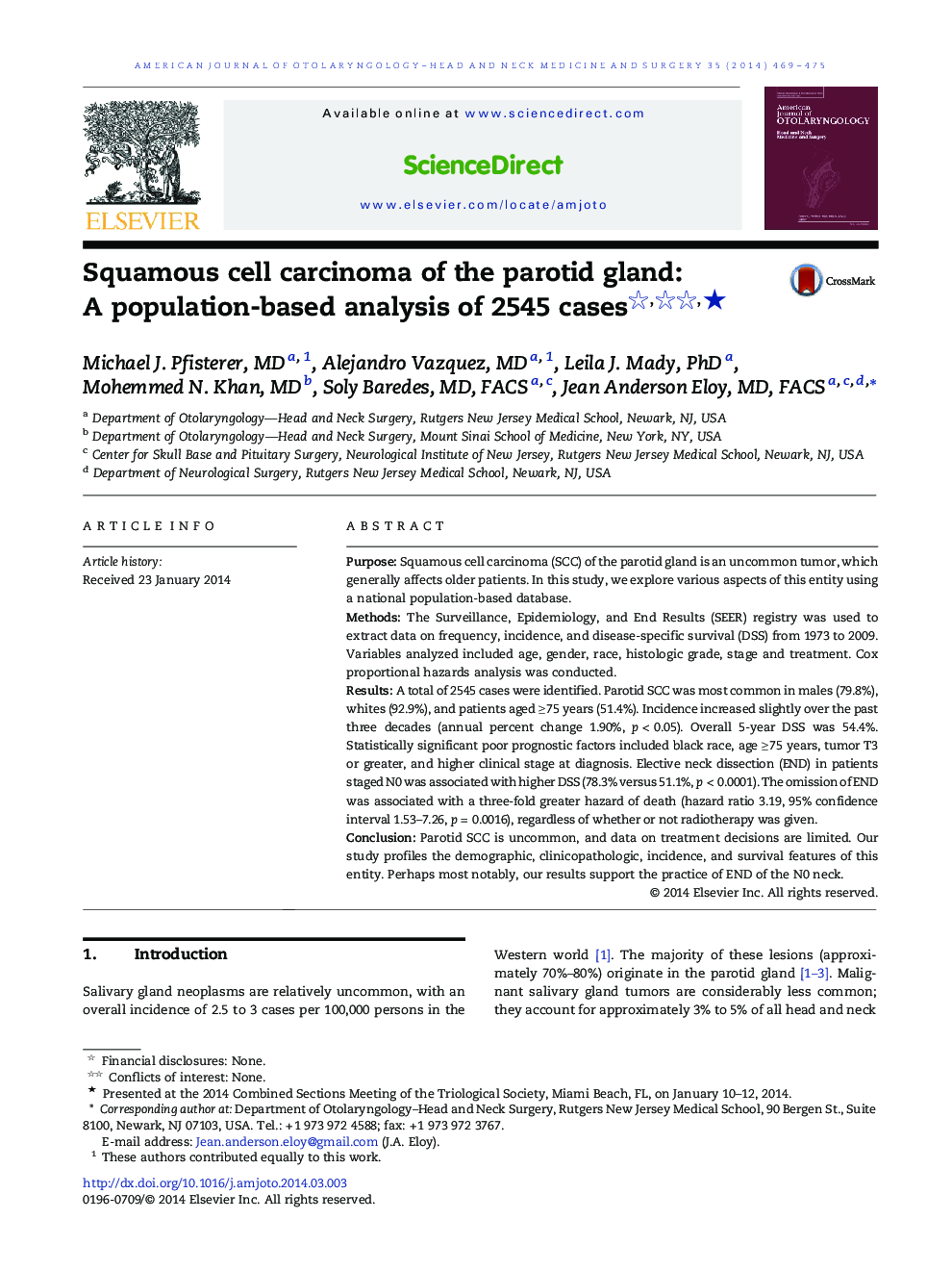| Article ID | Journal | Published Year | Pages | File Type |
|---|---|---|---|---|
| 4103082 | American Journal of Otolaryngology | 2014 | 7 Pages |
PurposeSquamous cell carcinoma (SCC) of the parotid gland is an uncommon tumor, which generally affects older patients. In this study, we explore various aspects of this entity using a national population-based database.MethodsThe Surveillance, Epidemiology, and End Results (SEER) registry was used to extract data on frequency, incidence, and disease-specific survival (DSS) from 1973 to 2009. Variables analyzed included age, gender, race, histologic grade, stage and treatment. Cox proportional hazards analysis was conducted.ResultsA total of 2545 cases were identified. Parotid SCC was most common in males (79.8%), whites (92.9%), and patients aged ≥ 75 years (51.4%). Incidence increased slightly over the past three decades (annual percent change 1.90%, p < 0.05). Overall 5-year DSS was 54.4%. Statistically significant poor prognostic factors included black race, age ≥ 75 years, tumor T3 or greater, and higher clinical stage at diagnosis. Elective neck dissection (END) in patients staged N0 was associated with higher DSS (78.3% versus 51.1%, p < 0.0001). The omission of END was associated with a three-fold greater hazard of death (hazard ratio 3.19, 95% confidence interval 1.53–7.26, p = 0.0016), regardless of whether or not radiotherapy was given.ConclusionParotid SCC is uncommon, and data on treatment decisions are limited. Our study profiles the demographic, clinicopathologic, incidence, and survival features of this entity. Perhaps most notably, our results support the practice of END of the N0 neck.
